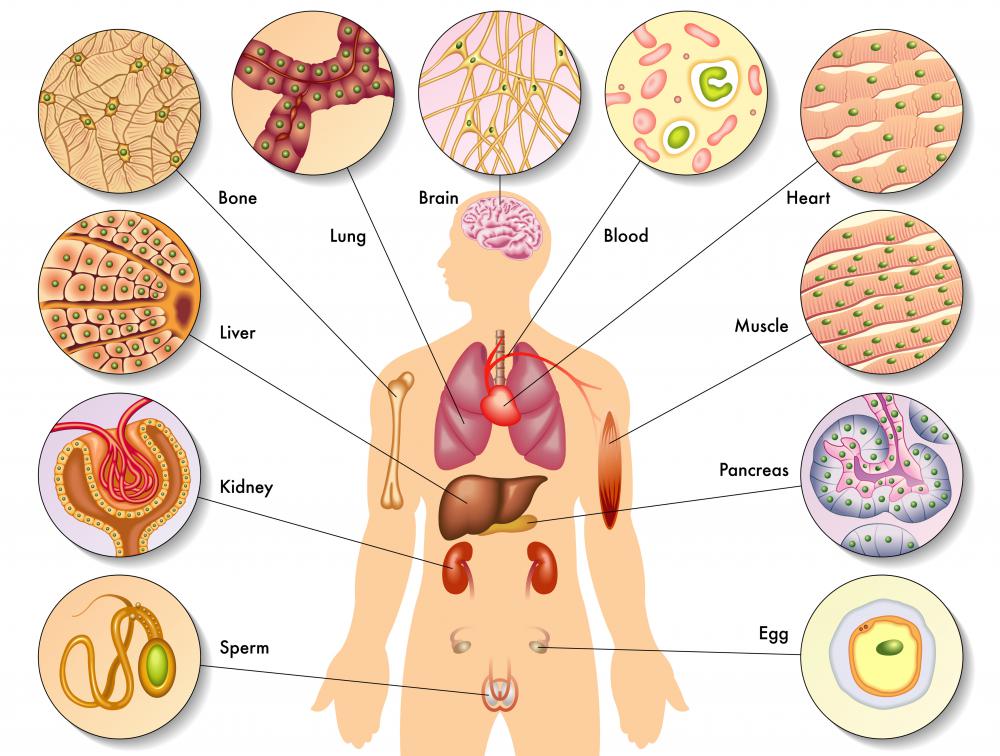At WiseGEEK, we're committed to delivering accurate, trustworthy information. Our expert-authored content is rigorously fact-checked and sourced from credible authorities. Discover how we uphold the highest standards in providing you with reliable knowledge.
What is an Afferent?
In anatomical terms, an afferent is a vessel or other conduit that brings substances towards a central area, which is often a major organ like the brain or the heart. It is the opposite of an efferent vessel, which carries substances away from these central locations. Perhaps the best known examples of these vessels are the veins of the circulatory system, which bring deoxygenated blood back towards the heart. Lymphatic vessels that bring lymphatic fluid into the lymph nodes are also known as afferents. Another example of this type of vessel are the afferent neurons, which convey sensory information to the central nervous system.
Veins are afferent blood vessels that carry blood that is rich in carbon dioxide and low in oxygen back towards the lungs and heart. They are similar in structure to the efferent blood vessels known as arteries, with an outer layer composed of protective tissue, a middle layer made of muscle tissue, and an inner layer made of epithelial cells that provide a smooth, almost frictionless surface for fluids to flow through. One-way valves inside the veins ensure that blood that is potentially full of waste products does not flow backward through the body. Deoxygenated blood in the veins is actually dark red, but veins close to the surface of the skin often appear blue in color because the skin causes some light refraction to occur.

Lymphatic fluid is the term used to describe interstitial fluid, or fluid that exists between cells, after it enters the vessels of the lymphatic system. This fluid picks up debris, dead cells, toxins and pathogens as it travels through the body. These waste products and harmful substances are often filtered within small organs called the lymph nodes. The lymphatic vessels that bring lymphatic fluid into the lymph nodes to be filtered are called afferent lymphatic vessels, while the vessels that carry lymphatic fluid out of the lymph nodes so that it may reenter the circulatory system are known as efferent lymphatic vessels.

Sensory impulses are conveyed towards the central nervous system by specialized cells called afferent neurons. These neurons transmit external sensory stimuli to the brain via nerve pathways. The brain interprets the stimuli and reacts to them. Sensations such as heat, cold, pain, and pressure are all transmitted by afferent neurons, as are various types of input from the taste buds, eyes, ears, and nose. Disorders of the afferent neurons can cause the brain to misinterpret external stimuli, causing conditions such as hyperalgesia, or acute pain sensitivity, and phantom limb syndrome, which causes pain in limbs that have been amputated or otherwise removed from the body. Efferent neurons are nerve cells that transmit signals from the brain to the peripheral nervous system.
AS FEATURED ON:
AS FEATURED ON:


















Discuss this Article
Post your comments